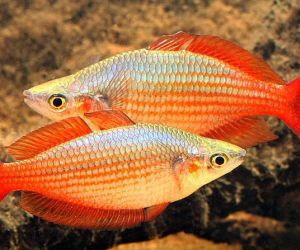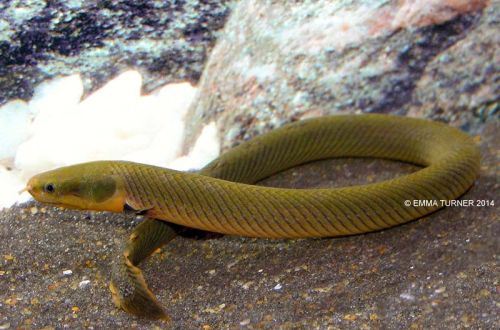
Betta Ocelata
Betta Ocelata or Cockerel Ocelata scientific name Betta ocellata, belongs to the Osphronemidae family. It is easy to keep and breed, but it is distinguished by complex intraspecific relationships and nondescript color, which predetermined its weak popularity in amateur aquarism.
Contents
Habitat
It comes from Southeast Asia from the island of Borneo. The natural habitat is limited to the territory of the Malaysian state of Sabah and the northern tip of East Kalimantan. Found ubiquitously, the fish has been found in habitats ranging from fast-flowing streams flowing down hills to forest swamps hidden among dense jungles.
Brief information:
- The volume of the aquarium – from 70 liters.
- Temperature – 21-25°C
- Value pH — 5.5–7.5
- Water hardness – 1–10 dGH
- Substrate type – any dark
- Lighting – subdued
- Brackish water – no
- Water movement – little or no
- The size of the fish is 8–9 cm.
- Food – any food
- Temperament – peaceful
- Content – singly or in pairs male female together with other fish
Description
Adults reach a length of 8-9 cm. Males can be distinguished from females by a wider head shape and elongated fins, in addition, they have more turquoise shades in color. In general, these fish do not differ in bright colors, mostly gray prevails.
Food
In nature, it feeds on small insects and other invertebrates/zooplankton. In home aquaria, it adapts to accepting alternative foods. The daily diet may consist of dry, frozen and live foods popular in the aquarium trade.
Maintenance and care, arrangement of the aquarium
The optimal size of the aquarium for one pair of fish starts from 70-80 liters. Keeping Betta Ocelata is quite simple if some important conditions are met: proper water chemistry, lack of strong current, cover to keep warm, moist air near the surface, subdued light levels or shading by floating plants, places to hide. As the latter, almost any natural (driftwood, plants) or decorative design elements are suitable.
The well-being of the aquarium and its inhabitants depends entirely on the smooth operation of the equipment, in particular the filtration system and the regularity of maintenance procedures: weekly replacement of part of the water with fresh water, removal of organic waste (food residue, excrement).
Behavior and Compatibility
Males are quite temperamental and do not get along well with each other, especially in a small aquarium. Between them, skirmishes for position in the intraspecific hierarchy are not uncommon. The losing weaker individual may be subjected to constant attacks if it cannot hide from the alpha male. The same fate will await females if they were acquired from another batch or have been separated from the male for a long time. In this case, they will also be perceived as potential competitors. The ideal community is as follows – a group of one male and several females, who grew up together from a young age, in the company of other non-aggressive fish of a comparable size.
Breeding / breeding
Breeding will not cause great difficulties if the fish are in the appropriate aquatic environment in the allowable range of temperatures and hydrochemical values. Male Ocelata must be from the same group. You can not settle together a male and a female randomly selected, for example, from different pet stores. With the onset of the breeding season, mutual courtship begins and a pair is formed. Spawning is accompanied by close “hugs”, when the fish nestle, wrapping themselves around each other.
At the end, all fertilized eggs are in the mouth of the male, who bears them throughout the entire incubation period, which lasts 12–17 days. The fry appear fully formed and ready to accept microfood intended for juvenile aquarium fish.
Fish diseases
The cause of most diseases is unsuitable conditions of detention. A stable habitat will be the key to successful keeping. In the event of symptoms of the disease, first of all, the quality of the water should be checked and, if deviations are found, measures should be taken to correct the situation. If symptoms persist or even worsen, medical treatment will be required. Read more about symptoms and treatments in the Aquarium Fish Diseases section.





